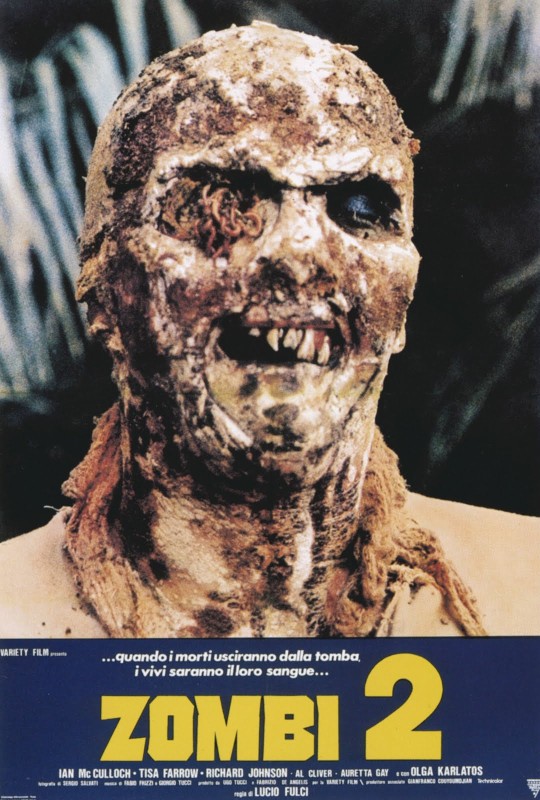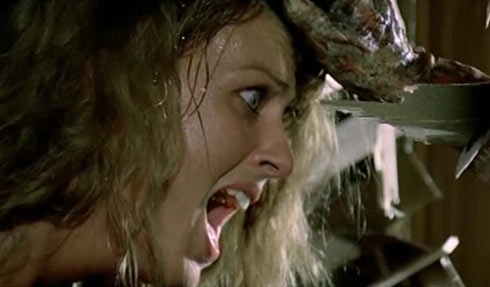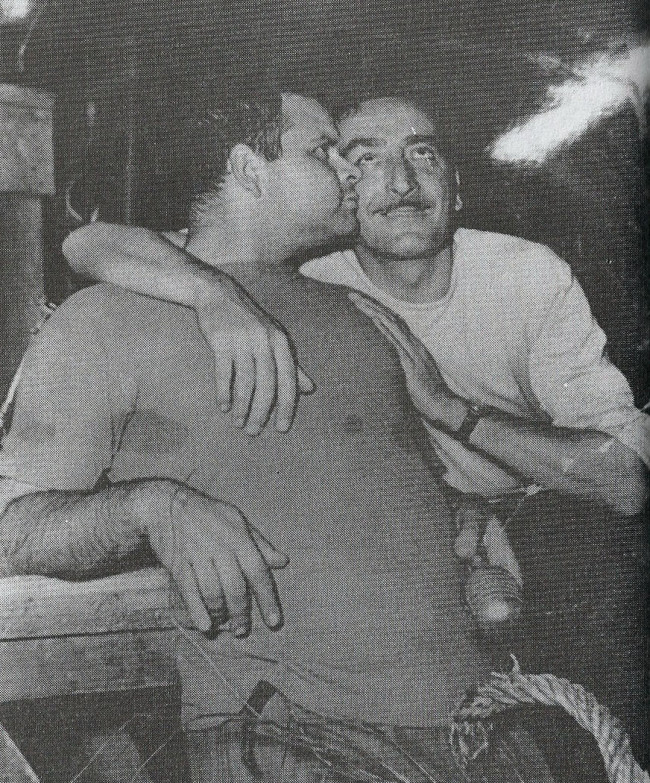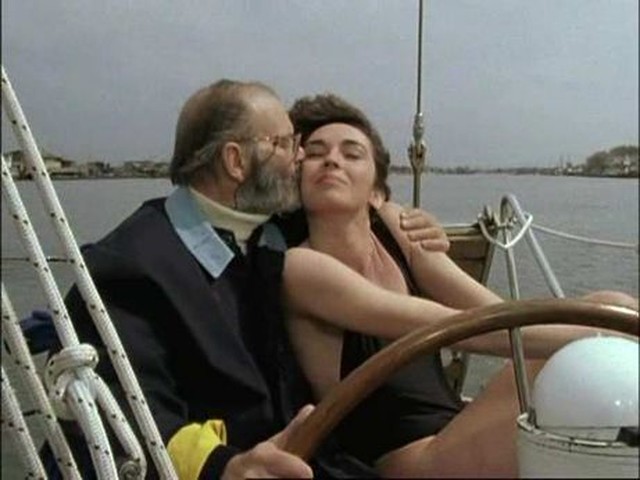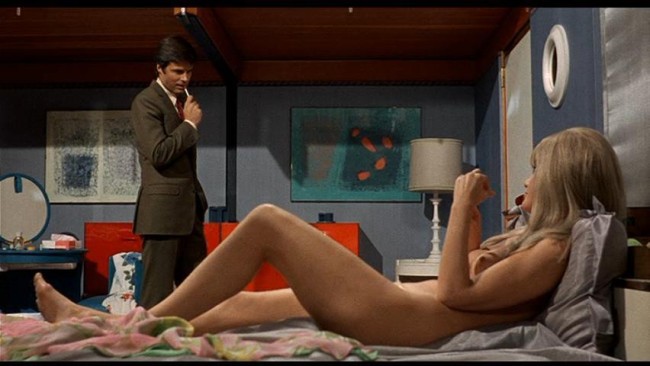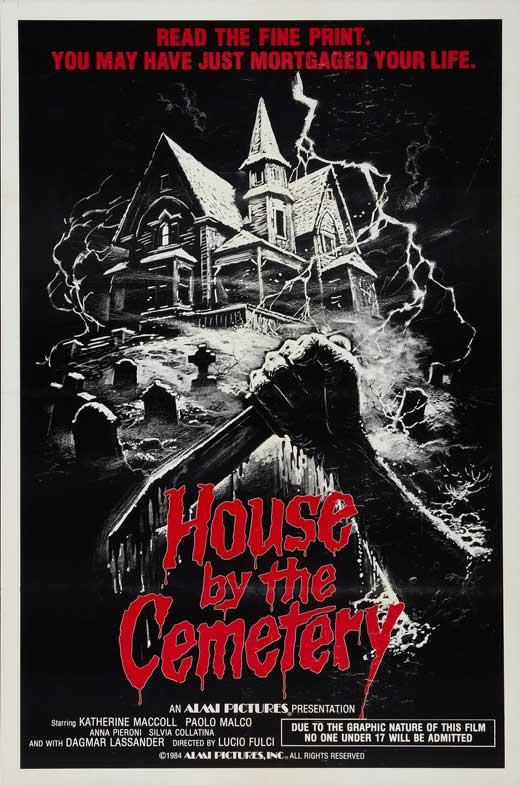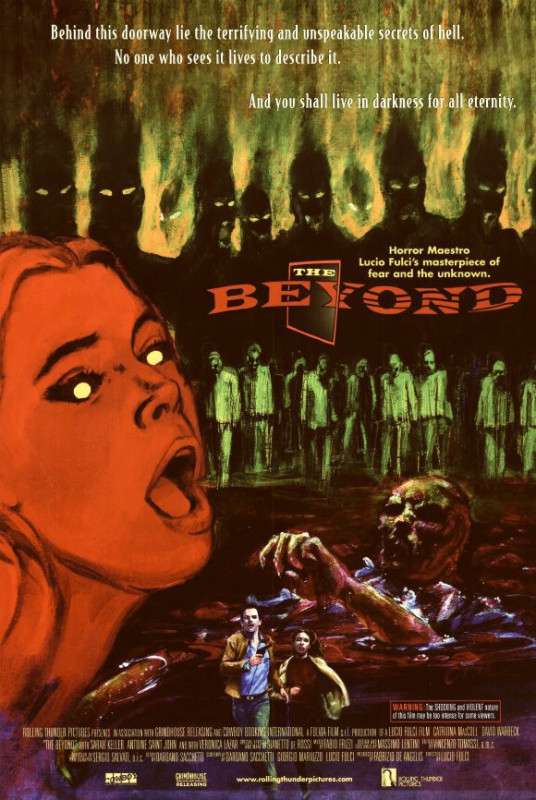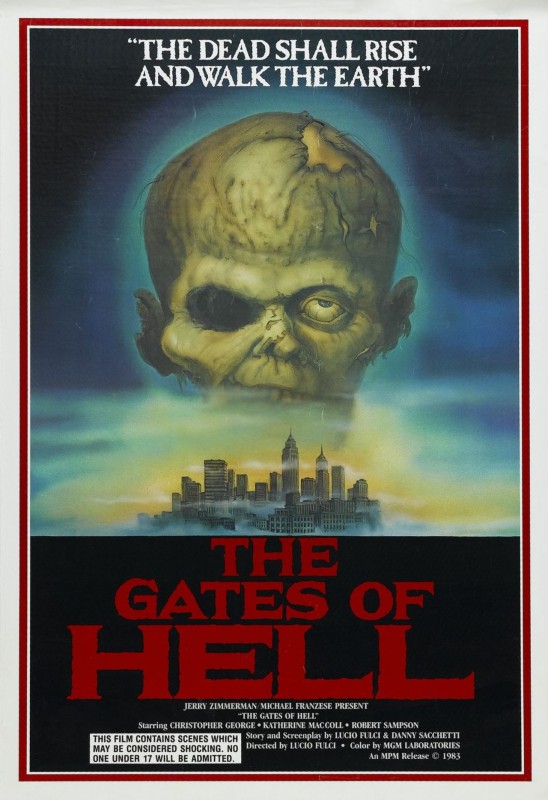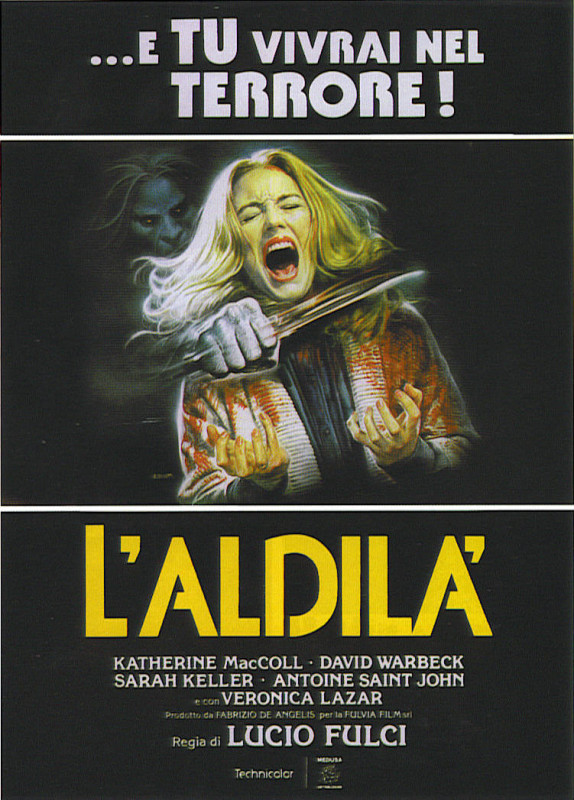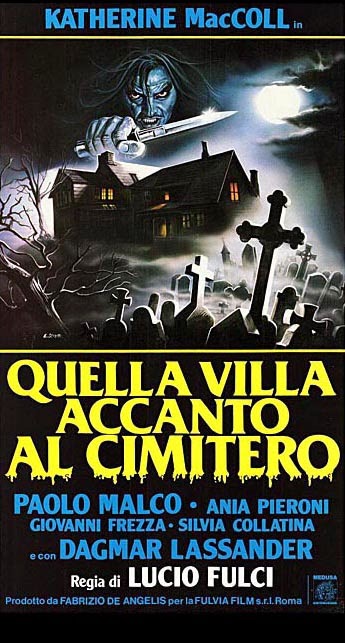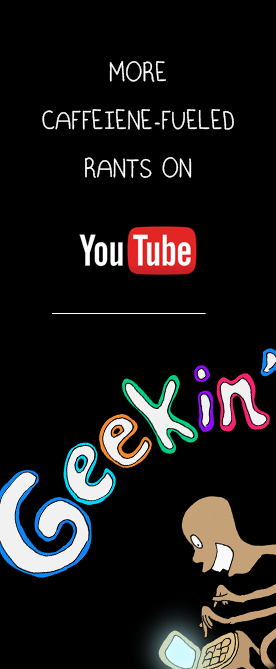By James Hancock September 2nd, 2015
CHECK OUT OUR NEW PODCAST ABOUT THE GREAT LUCIO FULCI
It has always been a dirty little secret of mine that I suffer from an incomplete understanding of Italian genre films, a treasure trove of raw, insanely over the top cinema that hardcore cinephiles like Quentin Tarantino greatly admire. So lately I’ve been making an effort to fill in this gap in my education by indulging in an obsessive look at the Italian genre films from the 1960s-80s starting with Mario Bava and later with Sergio Corbucci. When it came to picking the next director to examine it was a choice between Dario Argento and Lucio Fulci but I figured Argento’s reputation among horror aficionados was already so strong I felt I owed it to Fulci to check out his work first. My only prior experience with Fulci had been a midnight screening in the late Nineties of The Beyond (1981) when Quentin Tarantino decided to rerelease the uncut version of the film through his Rolling Thunder Pictures. While I was highly impressed by Fulci’s dark imagination, for some reason I never made an effort to see more of his work. For the last few weeks I’ve been scouring the earth trying to hunt down his most famous movies and gradually I’ve been chipping away at Lucio Fulci’s incredibly diverse filmography, one that includes westerns, murder mysteries, sex comedies and of course what he is most famous for, horror films. If your idea of Italian cinema is limited to mysterious shots of Monica Vitti’s beautiful face in the films of Michelangelo Antonioni or Marcello Mastroianni slyly smiling his way through the world of Federico Fellini, then Lucio Fulci’s best movies will come as a bit of a shock. Many of his horror films were banned outright or heavily censored when distributed internationally. In the United States, Lucio Fulci decided to release several of his films without a rating from the MPAA restricting the exhibition of the movies to grindhouse and drive-in movie theaters. Luckily his films still managed to build a passionate fan base. Decades later, his films have lost none of their visceral power to shock and horrify and for anyone pretending to have a working knowledge of the horror genre, I’d argue that they are making an empty boast without a thorough understanding of Fulci’s contributions.
What I love about Fulci’s movies is how even with his weaker films, there is always a sequence or a moment that grabs the viewer’s attention like some barbed fish hook embedded in your eyeballs. There might be a five to ten minute stretch in some of these movies where you feel as if you’re watching a rather dated traditional police procedural when suddenly some incredibly funky music will explode out of nowhere followed by some first-rate hyper-stylized filmmaking featuring a tantalizing erotic orgy or more likely some unimaginable scene straight out of the bowels of Hell. Every fan of low-budget genre films relishes these moments where their exploration through the forgotten esoterica of the past finally leads to a cinematic discovery of such shocking content that it feels like a miracle the filmmaker was not imprisoned for their unrestrained imagination. Fulci’s films are filled with hundreds of these moments making it incredibly difficult to stop watching his movies and finally write this post. It is bit like watching Fred Astaire or Jackie Chan movies where the viewer endures a few mediocre scenes in exchange for the sheer bliss one feels when they finally burst into action. The payoff is absolutely worth the wait. Fulci’s career had many ups and downs as well as his fair share of personal and professional tragedies. When diagnosed with cancer in 1969, Fulci’s wife committed suicide and a few years later Fulci lost a daughter to a car accident. These tragic losses weighed heavily on Fulci throughout his life. Then there were the controversies that were a natural extension of the content of his work. Several of his films such as Beatrice Cenci (1969) and Don’t Torture a Duckling (1972) got him in hot water with the Catholic Church. A Lizard in a Woman’s Skin (1971) landed him in court where he had to prove that his special effects did not involve harming any actual animals while making the movie. His more violent films such as The New York Ripper (1982) were too shocking for many viewers to handle which opened him up to attacks on his character with many of his critics labeling him as a misogynist.
Most of Lucio Fulci’s fans agree that the high water mark of his career was during his collaborations with screenwriter Dardano Sacchetti who wrote several of Fulci’s best films including The Psychic (1977), Zombie (1979), City of the Living Dead (1980), The House by the Cemetery (1981), The Beyond (1981), The New York Ripper (1982) and Manhattan Baby (1982). The two filmmakers regrettably had a falling out for reasons that differ depending upon whose story one chooses to believe but the reality is that when Fulci decided to make the mythological adventure movie Conquest (1983) without involving Sacchetti, the two men never worked together again. Conquest is one of the many movies that tried to cash in on the brief craze for fantasy movies ignited by Conan the Barbarian (1982) but when Conquest flopped, Fulci’s career never fully recovered. His films from the latter part of his career such as A Cat in the Brain (1990, with Fulci starring as himself) suffer from low production values and weak screenplays. To make matters worse, complications resulting from hepatitis and diabetes left Fulci’s health increasingly fragile making it difficult for him to work. When he died at 68 in financial trouble, some suspected that he had deliberately chosen not to take his medication in order to go out on his own terms.
To this day many of Lucio Fulci’s films are incredibly difficult to find, particularly online, a situation that needs to be remedied by the film distribution community. The man directed over 50 movies so when I set out on my mission to create a top 10 list, I figured I would be able to rip through his best films in rapid succession. I quickly found some of his essential horror movies such as Zombie, City of the Living Dead, and The Beyond but soon I had to do a thorough hunt through every online platform I could find. Netflix offers not one of his movies, but luckily a combination of iTunes, Fandor, Hulu and Amazon Instant Video yielded more results. In some cases such as Beatrice Cenci, one of Fulci’s personal favorites of his own work, Amazon did not bother to list Lucio Fulci as the director and it was only by luck that I stumbled across it at all. Finally I had to watch a few videos that had been uploaded to YouTube without permission (I assume they won’t be there forever) as well as order some out of print DVDs just to see enough movies to justify writing a Top 10 list with a straight face. I’m still working on finding a few films I’m hellbent on seeing but I have managed to find the majority of the movies that Fulci’s fans and Fulci himself regarded as his best. So now without further delay, here is my top 10 list of favorite movies from horror maestro Lucio Fulci.
Top 10 Movies by Lucio Fulci
Honorable Mentions that didn’t make the list: Beatrice Cenci (1969), Contrband (1980), The Black Cat (1981), Conquest (1983), A Cat in the Brain (1990)
10. Four of the Apocalypse (1975)
The only western by Fulci to make my list, Four of the Apocalypse is less a spaghetti western and more one of those bizarre hippie westerns that were a byproduct of the 1970s like Sam Peckinpah’s The Ballad of Cable Hogue (1970) and John Huston’s The Life and Times of Judge Roy Bean (1972). The story deals with four classic archetypes, a gambler, a hooker, a drunk and a madman as they band together and struggle to survive after breaking out of jail. What follows is a story filled with violent mayhem, torture, cannibalism, a little nudity and some of the most eccentric, unconventional music ever heard in a western.
9. Perversion Story aka One on Top of the Other (1969)
There’s no use beating around the bush, with Perversion Story the feature attraction is the astonishingly sexy Marisa Mell who also stars in my favorite Mario Bava film, Danger: Diabolik (1968). In Perversion Story Marissa Mell plays a bored wife who begins a double life as a stripper resulting in a convoluted tale of jealousy and murder that I must confess I mostly ignored anytime Marissa Mell was not on the screen. The movie is insanely erotic. An interesting technical note is how the movie utilizes some great shots through glass underneath couples during the wondrous exchange of bodily fluids much like the famous box spring shots found in the work of Russ Meyer.
8. The Psychic (1977)
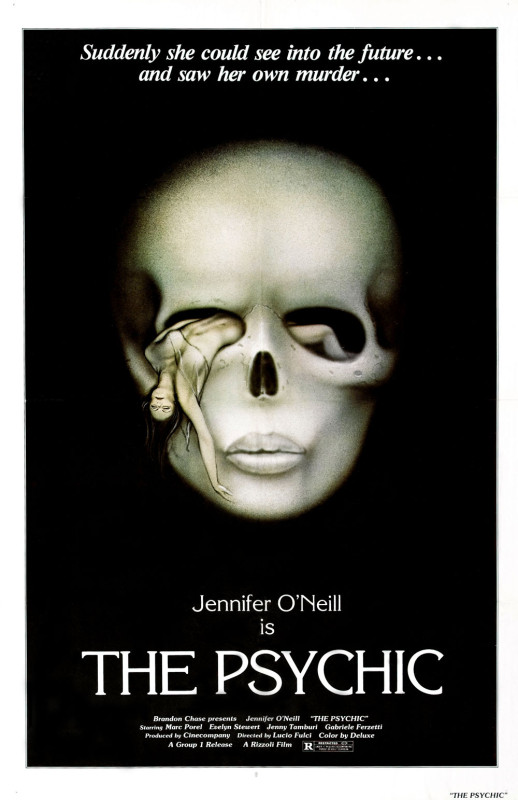 I had wanted to see The Psychic for many years ever since the late Nineties when Quentin Tarantino started distributing through Rolling Thunder Pictures a series of exploitation films such as Jack Hill’s Switchblade Sisters (1975). In a trailer for the VHS series, Tarantino outlined all the films he planned to release, however the series was canceled before The Psychic ever received the Rolling Thunders treatment. Well I luckily finally found the movie nearly twenty years after first hearing about it. The story follows a beautiful woman (Jennifer O’Neill from Cronenberg’s Scanners) with psychic powers who investigates the mystery of a skeleton found bricked up behind a wall in her husband’s home. Soon she starts to understand that her powers are giving her a clue to her own potential murder in the immediate future. The incredible finale is eerily reminiscent of Edgar Allan Poe’s classic short story, ‘The Tell-Tale Heart’. If you listen carefully you’ll also recognize music that Tarantino later used in Kill Bill: Vol. 1 (2003).
I had wanted to see The Psychic for many years ever since the late Nineties when Quentin Tarantino started distributing through Rolling Thunder Pictures a series of exploitation films such as Jack Hill’s Switchblade Sisters (1975). In a trailer for the VHS series, Tarantino outlined all the films he planned to release, however the series was canceled before The Psychic ever received the Rolling Thunders treatment. Well I luckily finally found the movie nearly twenty years after first hearing about it. The story follows a beautiful woman (Jennifer O’Neill from Cronenberg’s Scanners) with psychic powers who investigates the mystery of a skeleton found bricked up behind a wall in her husband’s home. Soon she starts to understand that her powers are giving her a clue to her own potential murder in the immediate future. The incredible finale is eerily reminiscent of Edgar Allan Poe’s classic short story, ‘The Tell-Tale Heart’. If you listen carefully you’ll also recognize music that Tarantino later used in Kill Bill: Vol. 1 (2003).
7. Don’t Torture a Duckling (1972)
One of Fulci’s personal favorites of his work, Don’t Torture a Duckling deals with a city-wide manhunt to find a serial killer who is murdering children. The most likely suspect is the sexually liberated Barbara Bouchet (who appears fully nude in what might be the kinkiest scene Fulci ever filmed). Without going into too many spoilers, the Catholic Church does not emerge from this story in the best possible light. This film closes with the earliest example I found of one of Lucio Fulci’s classic hallucinatory montage sequences that would become one of his signature stylistic flourishes in the years to come.
6. The House by the Cemetery (1981)
House by the Cemetery starts in classic Fulci fashion with a beautiful pair of naked breasts followed by an immediate encounter between a lovely young woman and a knife-wielding undead assailant. There’s no real turning back after that. The movie focuses on a couple and their son who move into a house where the basement was once a chamber of horrors for a doctor’s dark, unnatural experiments. All Hell breaks loose when the young boy tries to investigate the mysteries contained in that basement. The score alone, which is always a feature attraction in Fulci movies, is worth the price of admission.
5. A Lizard in a Woman’s Skin (1971)
Arguably Fulci’s most overtly erotic film, A Lizard in a Woman’s Skin is a bizarre murder mystery about a sexually repressed, socially conservative woman who is obsessed with her neighbor, a true libertine who seemingly on a nightly basis hosts wild psychedelic orgies. For the party sequences, Fulci utilizes split screen cinematography that would make De Palma on his best day drool with envy. Then of course there is the beautiful score composed by the legendary Ennio Morricone. Here’s a highlight reel of some scenes from the movie cut to Morricone’s music:
4. The New York Ripper (1982)
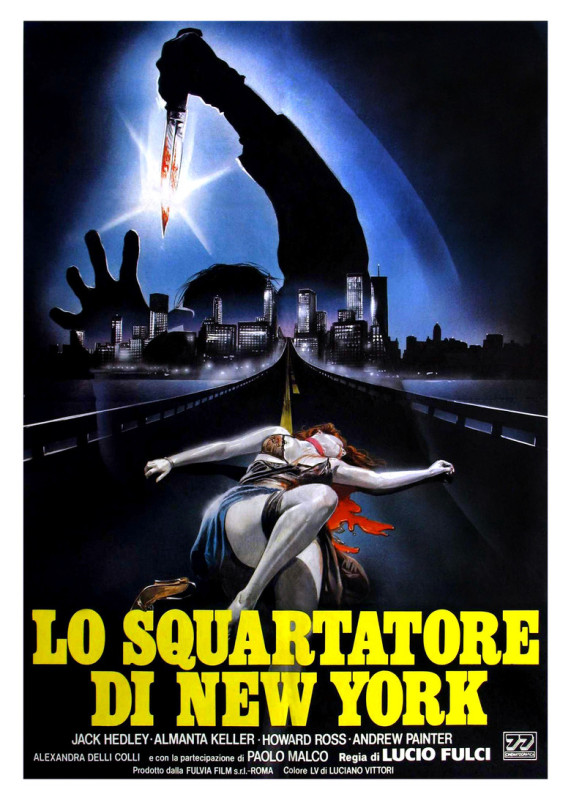 This is the only movie of Fulci’s where I’ll offer a word of caution. While most of Fulci’s horror films are incredibly brutal and disturbing, because so many of them take place in a supernatural context involving doorways to Hell, the dead returning to life, etc. it is easy to write them off as pure escapist fantasy. The New York Ripper is more rooted in reality and much more difficult to shake off after the fact. The movie offers a savage trip through one of the most violent periods in New York’s history, a vivid reminder that Times Square did not always resemble the Disneyland it has become today. The plot itself trails the police’s efforts to stop a killer of women who enjoys taunting both his victims and the police with a deranged Donald Duck voice. Of all the sadistic scenes of Fulci’s work, this movie has one in particular that tops them all. Tread lightly.
This is the only movie of Fulci’s where I’ll offer a word of caution. While most of Fulci’s horror films are incredibly brutal and disturbing, because so many of them take place in a supernatural context involving doorways to Hell, the dead returning to life, etc. it is easy to write them off as pure escapist fantasy. The New York Ripper is more rooted in reality and much more difficult to shake off after the fact. The movie offers a savage trip through one of the most violent periods in New York’s history, a vivid reminder that Times Square did not always resemble the Disneyland it has become today. The plot itself trails the police’s efforts to stop a killer of women who enjoys taunting both his victims and the police with a deranged Donald Duck voice. Of all the sadistic scenes of Fulci’s work, this movie has one in particular that tops them all. Tread lightly.
3. Zombie aka Zombi 2 (1979)
I’ve have three words for you: zombie versus shark. If that isn’t enough, Zombie is one of those classic situations where the Italian film industry decided to mislead the audience by marketing a film as a sequel to another successful film. In this case, they chose to exploit George A. Romero’s Dawn of the Dead (1978) which had been released in Italy as Zombi. This was incredibly common with Italian genre films at the time as can be seen with the dozens of unofficial Django sequels and knockoffs. In spite of these marketing shenanigans, Zombie is required viewing for any self-proclaimed fan of zombie movies with many of Fulci’s admirers often citing it as their favorite movie he ever made. Some of the horrific highlights include an agonizingly slow impaling of a woman’s eye on a piece of wood and an apocalyptic ending worthy of George A. Romero himself.
2. The Beyond (1981)
The first two movies on this list could just as easily swap places. They are both quintessential midnight movies and both feature a similar scenario where a doorway to Hell has been opened allowing the dead to walk the earth. I’ve always loved that Fulci’s zombie films do not rely upon a scientific explanation as was the case with Romero’s Night of the Living Dead (1968) or no explanation at all as we see in most zombie movies today. With Fulci, zombies are purely supernatural which is how I like it. The Beyond takes a little time getting up to speed but the last half is absolutely riveting leading up to an incredibly bleak final scene which for me is the best in Fulci’s career. The first time I saw this movie was at midnight at the end of a long day where I had already seen several movies back to back and I had foolishly decided to smoke herbal jazz cigarettes for each and every one of them. I was so zonked out that I managed somehow to fall asleep during The Beyond. Luckily, I woke up just in time for a scene that will forever be known as ‘Attack, Dickie!’ and I became a fan for life.
1. City of the Living Dead aka The Gates of Hell (1980)
Sixteen years before Wes Craven used the same trick with Scream, Lucio Fulci’s City of the Living Dead opens with the piercing scream of a woman over the opening credits. What follows is 93 minutes of pure ecstasy for horror fans. When a priest hangs himself in a church cemetery, he not only opens a doorway to Hell but also rises again as a demonic entity capable of making his victims bleed to death from within just by looking at them (a truly sickening sight to behold). His victims become infectious members of the walking dead and part of a plague that threatens to doom the entire planet. This is one of those flicks where horror fans will spend the majority of the movie shouting with glee at some of the astonishing scenarios cooked up by Fulci and screenwriter Dardano Sacchetti. From the epic score to watching the living have the backs of their skulls ripped out manually by zombies (happens 3 times) to a hurricane of maggots exploding through a window, I think this is most imaginative film of Fulci’s career and the most consistently stylish and entertaining from start to finish. Of all the movies I watched in preparing for this post, I am most eager to return City of the Living Dead for second helpings, in my opinion a true horror classic.
* * *
So I hope you’ve enjoyed this list. If you see anything missing give me a shout on Twitter to let me know. I still plan on seeing The Eroticist (1972), La Pretora (1976), Silver Saddle (1978), Manhattan Baby (1982) & Aenigma (1987). Now it is time for me rest up and recharge my batteries before diving into the final directed I’ve picked for my deep dive into the world of Italian genre films, the granddaddy of them all, Dario Argento.
CHECK OUT OUR NEW PODCAST ABOUT THE GREAT LUCIO FULCI
I am one of the Co-Hosts of Wrong Reel and you can find our content here:
Join the Conversation on Twitter
Subscribe to My YouTube Channel
Italian Posters to some Fulci Classics:
